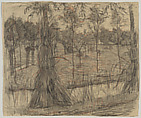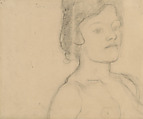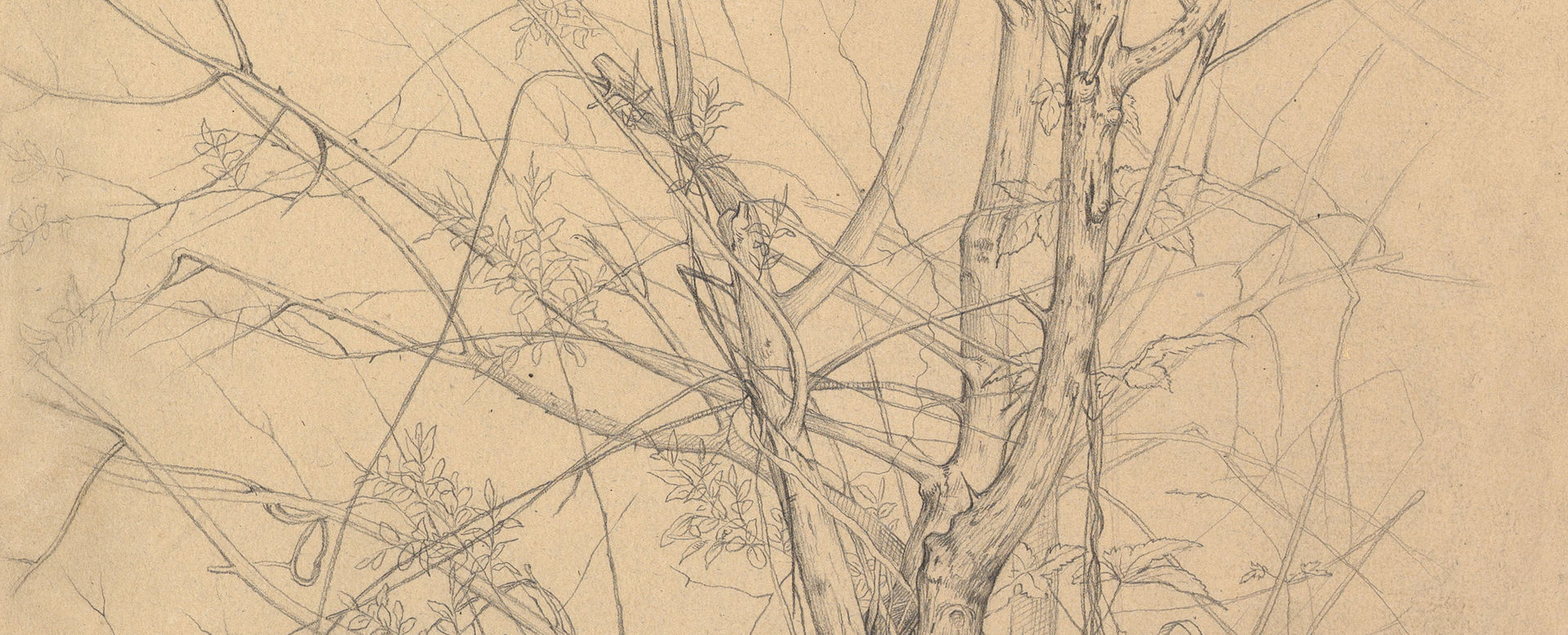Farmyard with Sheep (recto); Female Nude (verso)
Piet Mondrian Dutch
Not on view
Mondrian is best known for his red, yellow, blue, and black geometric grid paintings that he termed Neo-Plasticism (see the Met's Composition, 1921 (1999.363.57). Early in his career, he painted and drew the Dutch landscape, punctuated by trees and canals, as well as a handful of portraits and figure studies.This sheet combines both subjects. On the recto is a landscape drawing related to a painting in a private collection. The drawing on the verso represents the bust of a nude woman. The portrait must pre-date the landscape because it seems to have been cut down while the landscape perfectly fits the size of the sheet. Pin-holes in each of the corners indicate how the artist may have fixed the sheet to his easel and on to the wall. A photograph of the artist's studio dating from 1908 shows this drawing hanging on the wall of his Amsterdam studio. Robert P. Welsh, in the catalogue raisonné on the artist, notes: “Most remarkably, this drawing in a frame appears as the lowest of three hung on a narrow partition of Mondrian’s Sarphatipark residence… Since it is believed that the artist hung only pictures which were of interest to him at the time, the inclusion of this earliest of the images on display testifies to its continuing fascination as a motif” (Welsh, op. cit., p. 277).
In Mondrian's abstracting of the landscape, the repeating vertical trees and the bands formed by the alternation of land and canal, we can see the artist considering the geometrical essence of the landscape. Mondrian would eventually reduce such natural forms into lines and purely abstract geometric grids. This bold bust of an unknown woman could easily be mistaken for a drawing by Klimt in its soft, curving lines relate to late 19th-century art nouveau style.
Once it left Mondrian's studio, the sheet was owned by a distinguished group of the artist's supporters. By 1912, this drawing was in the collection of a plastic surgeon named J.F.S. Esser who was the first serious collector of Mondrian’s work, at a time when the artist was forced into teaching to earn his living.The drawing was then purchased around 1946 by Mondrian's patron and friend the collector Sal Slijper. For years, Slijper would help support Mondrian by buying works, offering him commissions, organizing exhibitions, and helping place his paintings in museum collections. By 1956 the drawing was in the collection of Charmion von Wiegand, an American journalist and former Moscow correspondent for the Hearst newspaper chain, as well as an art critic. A book about their relationship titled A Sameness Between Us: The Friendship of Charmion Von Wiegand and Piet Mondrian in Letters and Memoirs, illustrates this work front and back. (page 196, illustrated)
Due to rights restrictions, this image cannot be enlarged, viewed at full screen, or downloaded.
This artwork is meant to be viewed from right to left. Scroll left to view more.






